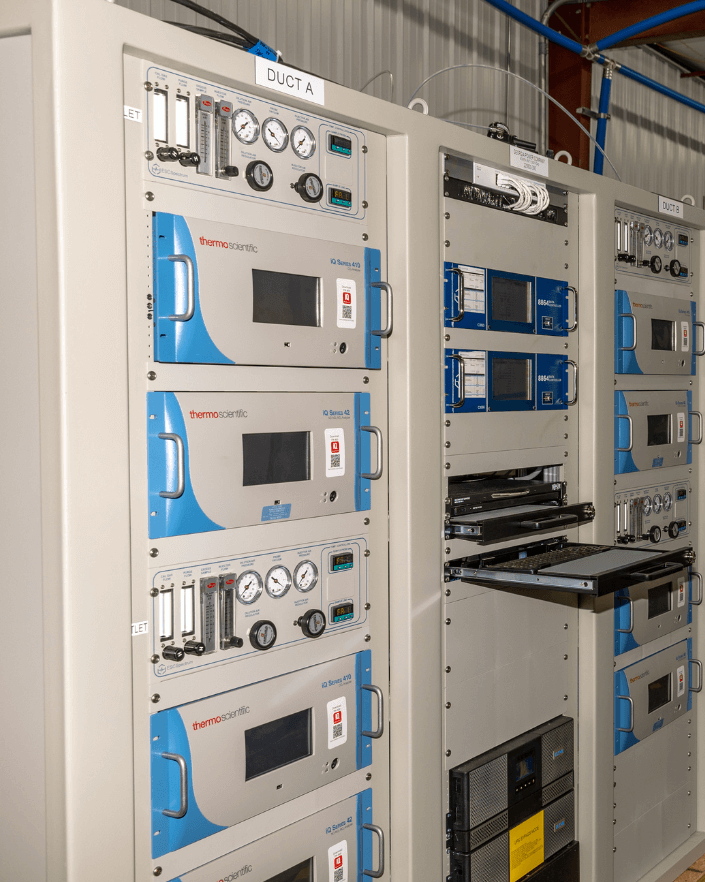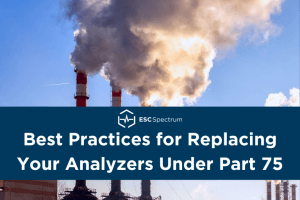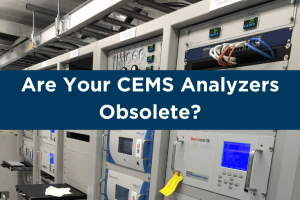Obsolete Analyzers
CEMS analyzers play a vital role in regulatory compliance for your facilities. With constant technological advancements and evolving regulatory requirements, older CEMS analyzers can become obsolete, posing risks to both compliance and operational efficiency. The following information serves as a walkthrough of which analyzers from our suppliers are obsolete, why you should upgrade yours, and how we can help. For more information on analyzers, read our CEMS 101 Series blog posts on NOx, SO2, CO, and Oxygen and Flow Analyzers.
List of Obsolete Analyzers From Our Suppliers
The following are some common analyzers from our suppliers that no longer receive full support or maintenance services from suppliers. If you don’t see your analyzer supplier below and/or are unsure if your analyzer is obsolete or not, contact us today.
Consumables, Spare Part, and Service Availability for the following Thermo Fisher iSeries instruments will no longer be provided beginning after December 31, 2025:
- 42i
- 42iLS
- 43i
- 48i
- 49i
- 49iPS
- 410i
- 146i
- 111
The following Teledyne analyzers are no longer available for sale and support services are limited to best effort with limited parts availability:
- SM8160, SO2/NO analyzer
- SM8175, SO2/NO analyzer
- SM8200, SO2/NO analyzer
Production for the following CAI 600 Series analyzers has been discontinued, however factory support for this generation (2012) continues for several more years.
- 600 Series HFID Analyzer
- 600 Series CLD Analyzer
- 600 Series NDIR analyzer

Why You Should Upgrade Your Analyzer Sooner Rather Than Later
If your analyzer is obsolete, you are risking your CEMS not having the capability to measure emissions properly to comply with regulations. This can be caused by inaccurate data, limited monitoring capabilities, maintenance challenges, or data that is incompatible with modern DAS technology and reporting requirements. With an outdated analyzer, these issues are more difficult to mitigate due to discontinued support and maintenance.
Here are a few benefits of upgrading to a newer version:
- Compliance Assurance: Investing in a more up-to-date analyzer can provide you with more accurate emissions requirements, increasing ease of meeting regulatory requirements.
- Enhanced Monitoring Capabilities: Updated analyzers come with more advanced features such as real-time monitoring, improved sensitivity, or a more wide range of measurable pollutants.
- Operational Efficiency: Modern analyzers also require less maintenance, which can reduce downtime and added costs for your facilities.
- Up-To-Date Digital Solutions: The newer your analyzer, the more compatible it may be with current data acquisition and reporting software.
Seamless Integration Case Study: Lightstone Energy, LLC
CEMS Analyzers: What They Are and How to Maintain Them
From The Source Blog

Best Practices for Replacing Your Analyzers Under Part 75
This article explores the significance of stack analyzer replacement due to factors like aging, obsolescence, and poor performance. Gain valuable insights into the complexities of CEMS analyzer replacement and recertification, aiming to assist industrial and utility plants in maintaining compliance with air quality regulation 40 CFR Part 75.

Are Your CEMS Analyzers Obsolete?
This article will help you identify if your CEMS analyzers are obsolete, what this means for your facility, and how ESC Spectrum can help!

Continuous Emissions Monitoring 101: Oxygen & Flow Analyzers
Read this article to learn more about two of the most reliable analyzers in the CEMS world: oxygen and flow.
